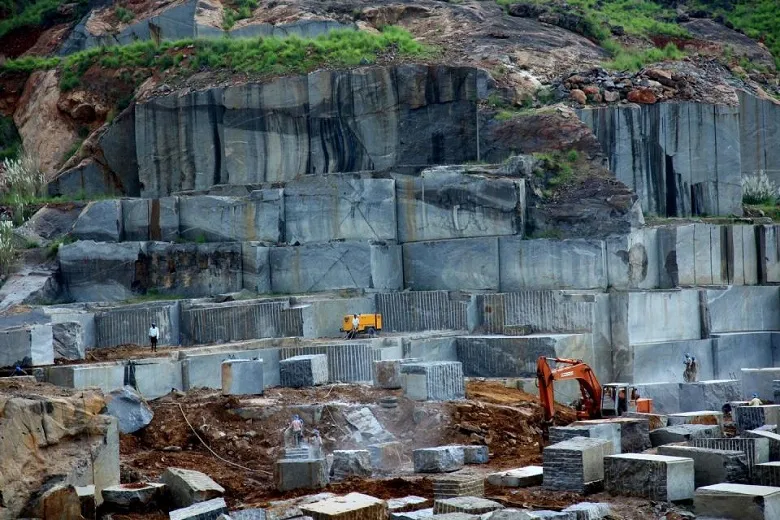Granite is one of the most durable and widely used natural rocks on Earth. It is an igneous rock formed by the gradual cooling and solidification of magma deep within the Earth's crust. Its name derives from the Latin word "granum," meaning grain, referring to its characteristic granular texture.
Granite primarily consists of three main minerals: quartz, feldspar, and mica. These minerals give it its distinctive appearance, with a variety of colors such as gray, white, pink, and black. The presence of different trace elements is responsible for the extensive color range of granite. Its high quartz content is what grants it exceptional hardness and resistance to wear.
Properties and Uses
Granite stands out for its unique properties, which make it ideal for various applications. Its hardness, resistance to wear, and durability under extreme weather conditions are some of the features that make it a popular choice for both interior and exterior use.
In the construction industry, it is used to create flooring, kitchen countertops, stairs, and decorative elements. It is also one of the primary materials for monuments and statues, due to its timeless durability. Additionally, granite is widely utilized in road construction and masonry, as well as for producing aggregates used in concrete construction.
Conclusion
Granite is an extremely useful and timeless material, combining beauty, durability, and practicality. Whether as part of ancient monuments or as a modern construction material, granite continues to play a pivotal role in our daily lives. Proper management of the planet's natural resources is essential to preserve this valuable material for future generations.


